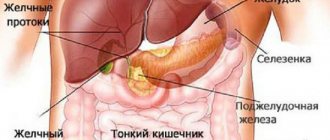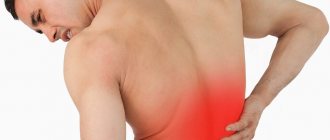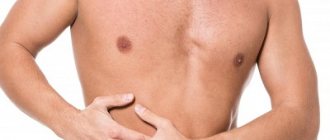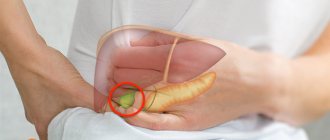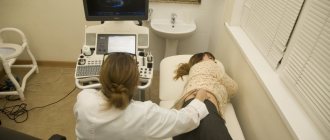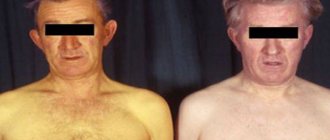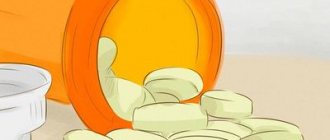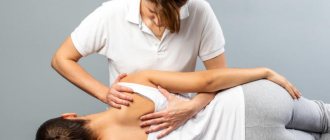Unpleasant pain in the right side under the ribs occurs with a number of diseases. This may involve damage to the liver parenchyma, kidney, pancreas, diaphragm, lung tissue or nerves. With a strong cough, pain is a consequence of stretching of the muscle tissue in the intercostal spaces. According to their intensity, pain under the right rib is divided into strong, weak, burning, stabbing, pulling. The patient needs to differentiate his perception of sensations by location. This symptom is often confused with damage to the radicular nerves due to osteochondrosis.
Causes of pain in the right hypochondrium
Pain in the right side may indicate the presence of pathological processes in the body
Pain in the right side is an indicator of a huge number of different diseases. However, sometimes discomfort manifests itself in absolutely healthy people.
Vital organs are located in this zone:
- liver;
- gallbladder;
- diaphragm;
- pancreas.
Discomfort rarely occurs unexpectedly, even with a history of certain diseases. There are exceptions when the inflammatory process develops quite rapidly.
People often experience pain and slight tingling in the right side after eating a large amount of food, excessive physical activity, sexual intercourse, trauma to the abdomen, chest, or internal hemorrhages.
When an exacerbation of an existing inflammation or disease of internal organs occurs, discomfort occurs as a response to the use of medications, supplements, or food intake.
Typically, chronic pathologies appear during the off-season, with a decrease in the body’s defenses, loss of strength, nervous strain, hormonal disorders and other conditions.
doctor
Specialized multidisciplinary clinic
Our staff consists of high-class doctors - members of the Russian and European Societies (EA).
We have a day hospital
We guarantee constant care for the patient and control over his recovery in the most comfortable conditions.
Low-traumatic treatment methods
We carry out operations with minimal intervention in the body using modern equipment of the new generation of intraoperative X-ray systems.
Associated symptoms of pain
Soreness is only sometimes an independent symptom. By and large, discomfort is accompanied by other signs of pathological processes in the gastrointestinal tract, endocrine and respiratory systems, and various inflammations.
These include:
- vomiting and nausea;
- increase in temperature indicators;
- excessive sweating;
- prostration;
- diarrhea and flatulence;
- fatigue and drowsiness;
- increase or decrease in blood pressure;
- disorder of consciousness;
- pain in the heart area;
- dizziness and loss of consciousness;
- increased heart rate;
- yellowness of the skin;
- pathological vaginal discharge;
- bleeding of mucous membranes;
- itching, burning, pain during urination;
- redness or rash on the skin in the rib area;
- cough, other symptoms.
Often, the presence of such signs is the only clue for a specialist to correctly identify a specific disease.
When does a person need help?
The ambulance is called in terminal conditions:
- Unexpectedly, there was severe pain in the side area; the pain lasted for 38–45 minutes.
- The person vomits bloody substances profusely, feels bitterness in the mouth, and hyperthermia appears.
- Pain increases during physical activity.
- The pain syndrome suddenly disappeared.
- Antispasmodic drugs do not help eliminate pain.
- Hematuria is observed.
- The patient became worse and became confused.
Who should I contact for pain in the right hypochondrium?
Since it is quite difficult to independently identify the cause of discomfort in this area, the patient is recommended to visit a therapist in the near future, who, if there is a problem, will give a referral to a more specialized specialist.
The general practitioner can refer the patient to the following specialists:
- gastroenterologist;
- cardiologist;
- hepatologist;
- pulmonologist;
- urologist;
- endocrinologist;
- oncologist;
- traumatologist;
- surgeon
If you have pain in the right hypochondrium, you need to undergo an ultrasound
Diagnostic measures necessarily include, first of all, interviewing the patient, studying the medical history, and a thorough examination of the patient. After this, the specialist prescribes the following:
Hepatitis
Doctors call congenital forms of the disease fetal. In this case, infection occurs in utero: from mother to child. If a pregnant woman is infected with hepatitis viruses, as well as if she has an acute form of the disease, she can easily infect her unborn baby.
In the vast majority of cases, the diagnosis of viral hepatitis is quite easy. In 75% of babies with jaundice, doctors find signs of this disease. A doctor may suspect the disease during a routine examination and determine the size of the internal organs. After such a clinical examination, the doctor prescribes several tests and studies to accurately establish the diagnosis.
Treatment of pain in the right hypochondrium
Elimination of any pathological process is exclusively individual in nature. However, in case of exacerbation of chronic diseases, it is enough to use antispasmodics and follow a certain diet. In addition, alternative medicine can also be used, but such treatment should not be the only one to eliminate such a symptom.
However, there are situations in which pain in the side requires immediate surgery. Main indications for this:
- acute and unbearable pain that does not go away for quite a long time;
- fainting;
- persistent vomiting;
- the presence of blood in urine, vomit or feces;
- upset stool for several days;
- fever;
- uterine bleeding.
The use of any medications for the above symptoms is strictly prohibited. It is recommended to immediately call an emergency medical team to relieve symptoms and hospitalize the patient for further diagnosis and therapy.
Methods for diagnosing pathology
Consultation with the following specialists may be required:
- pediatrician;
- pediatric gastroenterologist;
- nephrologist;
- immunologist
Diagnostics is carried out in two stages.
The first step is a physical examination, during which the doctor should determine the following:
- how long ago the symptoms began to appear, their duration and nature;
- personal and family history;
- the presence of chronic diseases, previous operations;
- whether the child is currently taking any medications.
- A physical examination of a young patient is carried out together with the parents.
To make an accurate diagnosis, the following laboratory and instrumental tests can be performed:
- general and biochemical blood test;
- general urine analysis;
- stool analysis;
- Ultrasound of the abdominal organs;
- Ultrasound of the genitourinary system.
The diagnostic program can be adjusted, since everything will depend on the current clinical picture, the baby’s health condition and the data that was collected during the initial examination.
Alternative Therapies
Corn silk helps with liver diseases
For various diseases of the gallbladder, the doctor prescribes preparations with immortelle.
The medicinal herb can be brewed with hot water and consumed as regular tea several times a day. The dosage should only be prescribed by a doctor.
For liver diseases, corn silk, rose hips and plantain are prescribed. The same medicinal herbs are prescribed for gallbladder pathologies.
In order to restore liver cells, decoctions prepared from milk thistle or hop cones are prescribed.
Milk thistle restores liver cells
Oat decoction is very effective in most pathological processes. It is recommended to take it after treatment of the liver and gallbladder.
Experts often prescribe mixtures containing knotweed, St. John's wort and chamomile. The duration of treatment is usually one month.
Preventive actions
Painful sensations, even if there are no other symptoms, always require consultation with a doctor. The doctor will find out the reason for their appearance and prescribe appropriate therapy. Under no circumstances should you take analgesics, antispasmodics, or relaxants. These drugs relieve symptoms, making diagnosis difficult. Do not use heat or cold without consulting a doctor. The best way out is to see a therapist, and if you experience severe discomfort, call an ambulance.
- Moderate physical activity.
- No alcohol abuse.
- Proper nutrition, without excessive amounts of spicy, fatty, salty foods.
- Seek advice at the very beginning of pain.
- Annual examination of internal organs, especially with alarming heredity.
Pain under the right rib may be a temporary phenomenon that occurs several times and will not bother you again, or it may indicate a serious illness that has already “settled” in your body. It is important to prevent its development, aggravation of the situation and consequences that could be disastrous. That is why, even once experiencing pain that is unusual for you, on the right side under the ribs, you should be wary and listen to your body.
Special diet
The complex of treatment measures, regardless of the diagnosis, includes a special diet, as a rule, this is table No. 5.
There are certain varieties based on it, so the diet can be used for various diseases with certain corrections.
If you experience pain in the right side, do not forget about the correct diet: small meals, a portion is no more than 200 grams, limiting cold and hot foods.
Products should be steamed or served boiled. During the period of exacerbation of pathologies, food should only be pureed.
List of permitted products:
- vegetable broths;
- Products that are allowed for pain in the right hypochondrium
boiled vegetables;
- porridges from various cereals cooked in water;
- dietary meat;
- low-fat fish;
- yesterday's bread;
- low fat dairy and fermented milk products;
- egg white omelettes;
- baked apples and pears;
- natural marshmallow and jam.
The following products or dishes are excluded from the menu:
- vegetables that contain coarse fiber;
- fish and meat of fatty varieties;
- alcohol;
- soda;
- coffee;
- hard-boiled tea;
- chocolate and cocoa;
- ice cream;
- grape juice;
- herbs and spices;
- sour fruits and berries;
- fruits containing huge amounts of carbohydrates;
- vegetables, fruits in raw form (applies only to the period of exacerbation);
- meat and fish broths;
- cereals (removed from the menu only in case of pancreatitis);
- bakery;
- sweet;
- cheesecakes, pancakes;
- fatty fermented milk products.
Before you start using the diet, it is recommended to visit a specialist.
How can it hurt?
Radiating pain can suddenly spread and be localized in various parts of the body, even if its source is far away. Subjectively, pain is perceived differently. A person can:
- Prick. This painful condition occurs during physical activity. In acute pancreatitis on the right side, there may be a stabbing pain on the back side, even if the person does not move.
- Burning, cutting, also causes acute pain. Such sensations occur with vertebrogenic pathologies and dysfunction of internal organs.
- Pull, whine. A person develops severe pathological changes.
- Sweep. Such sensations occur with pinched vertebrae, radiculitis, rheumatism and other problems. The lower back and lower thoracic spine are affected.

